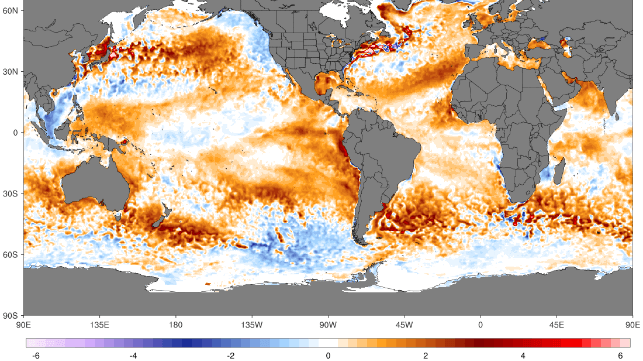
The world’s ocean surface temperature has reached an all-time high since satellite records began, according to the Guardian, citing government data. According to early statistics from the National Oceanic and Atmospheric Administration, the average temperature at the ocean’s surface has been 21.1 degrees Celsius since the beginning of April (NOAA).
As a result, the temperatures rose over the previous record high, set in 2016, of 21 degrees. Marine heat waves are being caused by the warming ocean temperatures all around the planet.
The University of New South Wales Prof. Matthew England, a climate scientist, stated “The current trajectory looks like it’s headed off the charts, smashing previous records.”
Three years of La Nina conditions in the broad tropical Pacific, which generate a stronger hurricane season, have aided in temperature reduction. This has lessened the effect of rising greenhouse gas emissions.
Possible El Nino trend in tropical Pacific could threaten heat records and increase the likelihood of extreme weather: NOAA
According to analysts, a possible El Nino trend in the tropical Pacific later this year could increase the likelihood of extreme weather and threaten world heat records. As a result of El Nino circumstances, the northern United States and Canada are experiencing drier and warmer weather than usual.
Dr. Mike McPhaden, a senior research scientist at NOAA, said, “The recent ‘triple dip’ La Niña has come to an end. This prolonged period of cold was tamping down global mean surface temperatures despite the rise of greenhouse gases in the atmosphere.”
“Now that it’s over, we are likely seeing the climate change signal coming through loud and clear.”
According to NOAA statistics, ElNino, which occurred from 2014 to 2016, corresponded with the second-warmest global average ocean temperatures. The data is mostly generated by satellite observations, although it is supplemented with measurements obtained by boats and buoys. Statistics do not include the polar regions.
The ocean has absorbed more than 90% of the excess heat brought on by the release of greenhouse gases into the atmosphere as a result of burning fossil fuels and deforestation. According to research from the previous year, the amount of heat building up in the water was speeding and penetrating deeper, fueling extreme weather.


